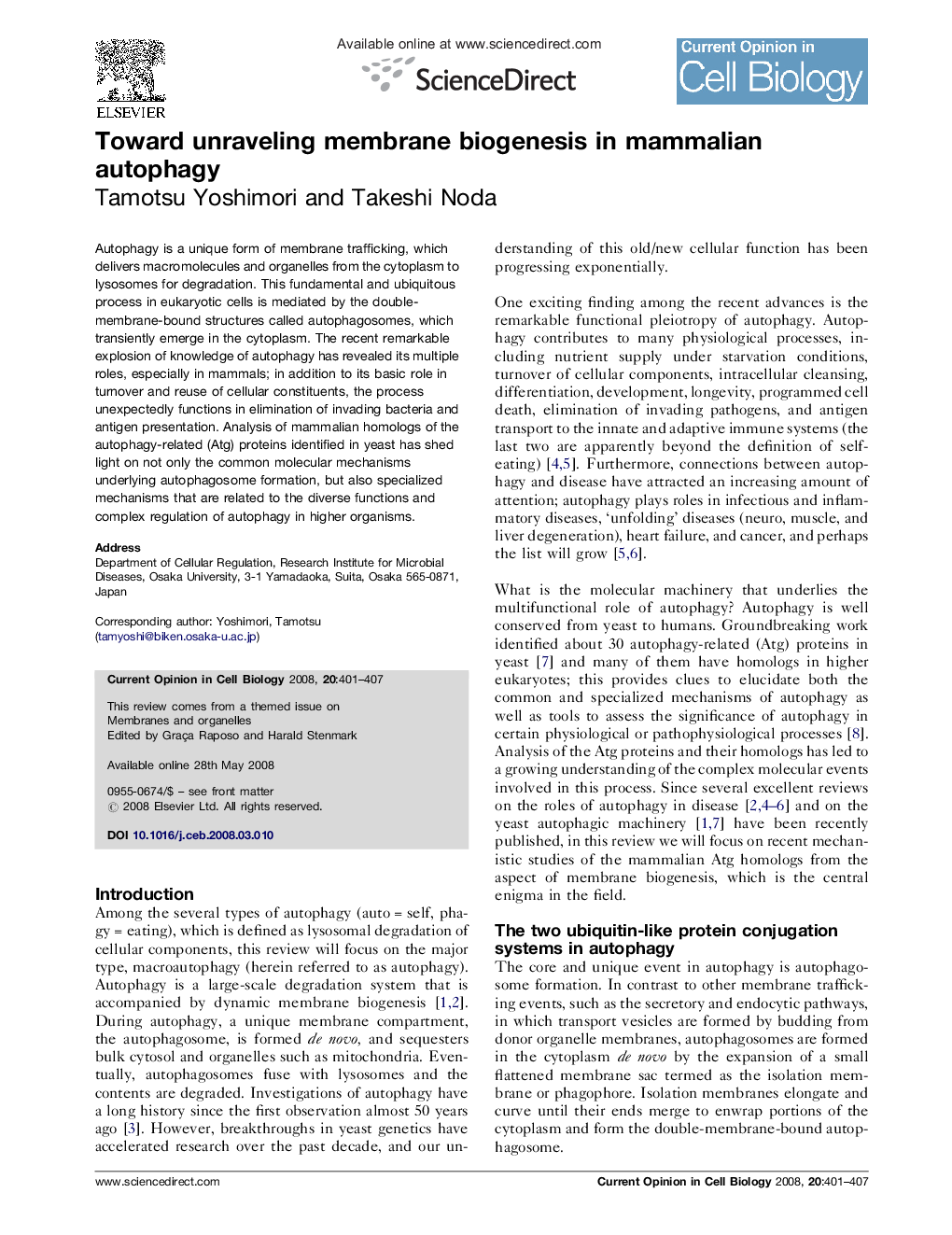| Article ID | Journal | Published Year | Pages | File Type |
|---|---|---|---|---|
| 10929383 | Current Opinion in Cell Biology | 2008 | 7 Pages |
Abstract
Autophagy is a unique form of membrane trafficking, which delivers macromolecules and organelles from the cytoplasm to lysosomes for degradation. This fundamental and ubiquitous process in eukaryotic cells is mediated by the double-membrane-bound structures called autophagosomes, which transiently emerge in the cytoplasm. The recent remarkable explosion of knowledge of autophagy has revealed its multiple roles, especially in mammals; in addition to its basic role in turnover and reuse of cellular constituents, the process unexpectedly functions in elimination of invading bacteria and antigen presentation. Analysis of mammalian homologs of the autophagy-related (Atg) proteins identified in yeast has shed light on not only the common molecular mechanisms underlying autophagosome formation, but also specialized mechanisms that are related to the diverse functions and complex regulation of autophagy in higher organisms.
Related Topics
Life Sciences
Biochemistry, Genetics and Molecular Biology
Cell Biology
Authors
Tamotsu Yoshimori, Takeshi Noda,
